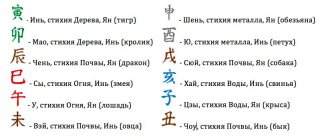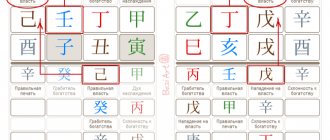In Vasmer Max's dictionary
genus. p. -a, ukr., blr. stovp, stovp, other Russian. stalp, st.-slav. stlаp πύργος, κιών, στήλη (Ostrom., Euch. Sin., Supr.), Bulgarian. stalp "pillar", Serbohorvian. stup, gen. p. stupa, Slovenian stolp, Czech. sloup, slvts. stlp, Polish sɫup, v.-luzh. stor, n.-luzh. sɫup, lab. staup “altar” (Trubetskoy, ZfslPh 1, 153). Praslav. *stъlpъ along with *stъlbъ (see pillar), related to lit. stul̃pas “pillar”, lt. stùlps “pillar; shin, calf", stulpe "middle bone of the leg"; see Trautman, BSW 290 et seq.; M.–E. 3, 1102; Specht 260; KZ 68, 123. Other isl. stolpi “pillar, column” is not borrowed. from Balt. or slav., contrary to Zubaty (Wurzeln 21 et seq.); Wed Stender-Petersen, below. In the same way, *stъlpъ cannot be considered based on the mere presence of -р- borrowings. from German, contrary to Mehringer (Wus I, 200), Stender-Petersen (280 et seq.); see Brückner, AfslPh 42, 139 et seq.; Kiparsky 86 et seq.; Thorpe 489; Holthausen, Awn. Wb. 283.
The meaning of the word pillar
A pillar rose from the crater... Little by little, the upper part of the pillar melted, and a huge black cloud remained below.
Thus, in the ancient Russian apocrypha of the 15th century “On All Creation,” the World Mountain is called a “pillar”: “There is a pillar in Okiyan, called adamantine.
So Grishutka used to think: “Here was a prince, and he ruled the kingdom, he lived in white-stone chambers, he had a countless golden treasury, countless earthly treasures... He exchanged royal trash for a rotten log, sweet honey for swamp water...” And a strong thought sank into Grisha’s young head - how he could save his soul in the desert wilds with fasting and prayer... That thought grew, expanded, and, looking at the blue of the dense forest that was visible beyond the river at the edge of the sky, that’s all he thought about. Grisha thought about how to build a cell in that forest, how to pray there in the serene desert, how to eat wild vegetables, strive for an honest life, erect a pillar for the sake of heroism and stand on that pillar for thirty years, without lying down or kneeling bowing down, never putting your hands down, never taking your eyes off the sky...
The Bible speaks of the Babylonian pandemonium (pillar-tower of creation): God confused the languages of the inhabitants of Babylon who tried to compete with him, erecting a pillar (tower) to heaven.
“David,” says Ambrose, “created a pillar to protect and decorate the city: it was a defense, because from the pillar you can see the enemy from afar and drive him away from the city, and a decoration, because it surpassed in its height all the tall buildings of Jerusalem.”
It is not in vain, therefore, that our Patroness is likened to a pillar, Who for us is a solid pillar in the face of our enemies: in truth, She protects us and adorns us.
She also adorns the entire spiritual Jerusalem, or the Church of Christ, which sings in this way today: “Oh, a wonderful adornment to all the faithful, you are a prophetic fulfillment, glory to the Apostle and fertilizer to the martyr, praise to virginity and a wondrous cover to the whole world” [14]. On the pillar Along with David’s shields were the arrows of the defenders of the country: and the Most Pure Virgin, this animated pillar, also has with Her the arrows of the mighty, i.e.
At noon he climbed the bell tower and fell asleep; in a dream he sees a pillar of fire, and near it the image of the Mother of God, called Hodegetria, venerated the image, and it was hot from the pillar of fire; I woke up in horror, felt my forehead, and it also turned out to be hot.
How carefully I took care of you, erected a beautiful pillar for you, placed golden idols in it to preserve you, for your sake I decorated the pillars and beds with gold, and you repaid me for good with evil.
I look at the giant pillar, calculating the first tens of meters of the path, and notice on a dim trunk, high above the marble pedestal, first one figure of a daredevil, diligently climbing up, then another lower down, I take a few steps around the pillar and see a third...
PILLAR
222
Pillar - pillar
(1)
1. Pillar, column.
Having created the blessing of receiving golden pillars for temples. Gr. Nazian., 39 (XI century).
And they blasphemed the treasure, burned the dead man, and collected the bones, put them in a small vessel, and placed them on a pillar along the way, as they do in Vyatichi even today.
Pov.
time years, 15 (1377 ~ beginning of the 12th century). 1175: The bottom of the church from top to bottom and along the walls and along the pillars is forged with gold.
Ipat.
years., 581 (XV century). Looking at the floor, glittering with golden coverings and stone walls... the rags of elephants are decorated, the midships (like
that!
) are pillars, the heads of the property of Evel;
The dummies are countless. Alexander., 92 (XV century ~ XII century).
The fifth is from young people named Sava.
Come, riding onto the tent, the great golden-domed one and cutting the tent pillar. J. Alex.
Nev. (B), 167 (XVII century ~ XIII century). || Something that resembles a pillar; likeness of a pillar: It is dark on the day: two suns are dark, both the crimson pillar is extinguished, and with it the new moon, Oleg and Svyatoslav are dragged by darkness and plunged into the sea, and a great riot is brought to Khinovi. 25
.
Yelma did not see the many Vyshegorod lying as the holy martyr, the holy passion-bearer of Christ Roman and David... in the place where he was lying, seeing the pillar of fire standing, and when the angels heard singing. J. Bor. Gleb. (Usp.), 18 g (XII century ~ XI century).
1091: When you hit the beat, you saw 3 pillars, like arcs of zarny, and standing above the top of the church, where Theodosius was laid.
Pov.
time years, 138 (1377 ~ beginning of the 12th century). All who dwell on this earth hear that you are Lord in them... and your cloud stands over them, and a pillar of cloud goes before them in the day, and a pillar of fire in the night.
Bible
Genn. Num., xiv, 14 (1499). Wed. M. P. Alekseev
(P.I. Preis in his work on
“ The Tale of Igor’s Campaign
.” -
Report and communication of the Philological Institute. Leningrad, 1951, issue 3, p. 245):
“What does “both crimson pillars” mean? ? On a separate sheet of paper, Preuss copied from Ehrmann's book several observations of atmospheric-optical phenomena that the German scientist observed during the winter months in Tobolsk. Here is Preuss's extract in translation: ... two red pillars ... appeared then ... at the same height as the sun. The less red columns, with which each pillar extended to the horizon, often had an oblique and changing direction, like stripes of rain bending from the wind.”
|| Peren
. About Christian ascetics and theologians in whom the church sees the support of faith.
May Trophim be praised, may Savathia be glorified, may Dorumedon be exalted today, the pillars are motionless, he took the faithful. Min. Sept. 0157 (1095).
You are a heavenly person, an earthly angel, a pillar and strength of our earth.
J. Bor.
Gleb. (Usp.), 17 a (XII century ~ XI century). 223
2. Tower.
Siluamsk fell on me and beat me. Ostr. Ev., 289 (1056-1057).
And she asked the citizens: “Where is your emperor Licinia?”
They decided: “He will remain in Are.” Much.
St. Irina (Usp.), 74 b (XII century). 1277: A pillar of stone stood tall in front of the city gates, and the Jews locked themselves in it.
Ipat.
years., 878 (XV century). || Jail.
1188: The king entered Galich, did not put Volodimer in it, but gave the whole outfit to the Galicians and put his son Andrey in it, and took Volodimer with him to the Ugrians again, in need of the spoils, and put him on a pillar and with his wife. Ipat. years., 661 (XV century).
|| About the place of the saint’s asceticism.
On the holy pillars, the venerable Sumeon, having mounted himself, he gave himself up to the world. Min. Sept. 010 (1095).
◊ Stlpa - named after. pad. dual h.
PILLAR, PILLAR
Pillars, which are mentioned over a hundred times in the Bible, undoubtedly occupied a prominent place in the biblical world. The vast majority of references to pillars refer to unusual rather than familiar places, and they play a symbolic rather than an architectural role in the Bible. Most often, pillars are associated with holy places (descriptions of the tabernacle and temple are replete with references to pillars) and, secondly, with monuments.
The Bible mentions two types of pillars - pillars that support buildings and pillars that stand on their own. The latter were often large stones erected to mark a place. They could serve as monuments to attract the attention of passersby to a significant place, such as the monument that Jacob erected over Rachel's tomb (Gen. 35:20). The same Jacob set up the stone on which he lay at Bethel as a monument and anointed it as evidence of his encounter with God (Gen. 28:18; cf. Gen. 31:13; 35:14). The significance of the stone as a witness is more clearly expressed in other passages where monuments are erected as a sign of the covenant (Gen. 31:44–48; Exod. 24:4; Josh. 24:26–27). A variation on the theme of the pillar as a monument is the pillar of salt into which Lot's wife turned (Gen. 19:26), as Jesus pointed out in his famous aphorism (Luke 17:32).
Some pillars that are mentioned in connection with religion also fall into the category of free-standing pillars that do not act as supports. In front of the porch of Solomon's temple stood two bronze pillars, called Jachin and Boaz (1 Kings 7:15–22; Jeremiah 52:21–23). The symbolic function of these huge, magnificent gate posts seems to have been to demonstrate that the Lord had entered through these gates into the temple and was with His people. In addition, these non-load-bearing monoliths, with their size and mass, symbolized the greatness and immutability of God, and, standing next to them, believers were aware of their insignificance.
The importance of pillars as supports for buildings is well illustrated in the account of Samson's final labor, in which a pagan temple collapsed when Samson removed the two middle pillars (Judges 16:23–30). But even in this story, pillars served more than just an architectural function, since Canaanite sanctuaries usually had one or more pillars erected for sacred purposes. Pillars also served an architectural function in ancient cosmological concepts. Just as large buildings require pillars for support, so the earth and heaven are depicted as resting on pillars (1 Sam. 2:8; Job 9:6; 26:11).
If we turn to the special cases in which pillars appear in the Bible, the metaphorical meaning will be even more expressive. In Ps. 143:12 the king-poet prays: “May our daughters be like skillfully sculptured pillars in the palaces.” This is an image of brilliant beauty, attractiveness and splendor. Equally expressive is the picture of the house of Wisdom with “seven pillars” (Prov. 9:1). Here, pillars are also associated with beauty and reliability, and the number “seven” gives an aura of perfection and completeness.
Two vivid metaphorical images of architectural pillars are associated with pillars as supports of the temple. In Gal. 2:9 Paul speaks of the three leaders of the Jerusalem church—James the Lord's brother, Peter, and John—as “honored as pillars.” This is not just an example of the habitual use of metaphor in relation to a person supporting other people or an organization; this image expresses the understanding of the Christian community as a new temple in which God is present. By analogy with Christians as the stones from which the temple is built (1 Pet. 2:5), and the apostles and prophets as the foundation of the building (Eph. 2:20), these key figures of the Jerusalem church are depicted as the pillars of the temple. Later the image was expanded to apply to the redeemed community: in Rev. 3:12 Christ promises to make every Christian faithful until death a pillar in the temple of God. Since the promise is supplemented by the words “and he will no longer go out,” the main idea here is the constancy of the place in the overall structure.
In 1 Tim. 3:15 describes the church as “the pillar and ground [better translated “foundation”] of the truth.” The point is that the church is meant to uphold the truth of the gospel. Since earlier in the same verse the church is called the “house of God”—the temple in which God dwells—there may also be a connection here with the pillars of the temple, although the image is not entirely specific.
The two most famous pillars in the Bible did not rest on the ground at all. God's presence with Israel in the wilderness took the visible form of a pillar of cloud (by day) and a pillar of fire (by night) that went ahead of the people and illuminated their way (Ex. 13:21–22; Neh. 9:19). The cloud and fire symbolized God's presence, and the word pillar expressed the outlines of the phenomenon. Here we see the halo of holiness that often surrounds biblical references to pillars.
See also: COSMOLOGY, FOUNDATION, TEMPLE.
FOOT. See LEG (II).
Duplicate pillars in the bazi map
Duplicate pillars are identical pillars in a bazi chart. This phenomenon is infrequent, and this is for the better, since it often only brings trouble, for the simple reason that the duplicate, as it were, pulls your functions over itself, duplicating them. The strength of the pillar doubles and produces a strong influence on the character of a person. If the pillar is “stubborn”, the person will be doubly stubborn.
In order to understand that there is a duplicate of the pillar of the day, you need to remember that the Heavenly Stem of the day means the person’s personality, his personal results, and the Earthly Branch of the day means his spouse, health, home, as well as what a person does for himself.
If there is a duplicate of the day in the chart, this means that in the Heavenly trunks we see the energy of the Brotherhood. Brotherhood can be useful, and a person receives additional profit from the environment, he has character, he can achieve his goals.
However, if the Brotherhood is not useful, then a person's brother or sister, his friends, constantly compete with him and receive the benefits intended for the person before himself. Parents of a child who has a duplicate pillar of the day in the month or year should ensure that the property in the inheritance is divided fairly. But even in this case, children may be unhappy with the division.
Duplicate of the pillar of the day in the year - brother/sister receives the property of their ancestors, they are the first to receive attention from society, competition is possible at this level.
Duplicate pillar of the day in the month - brother/sister are fighting for the love of their parents, and the issue of real estate is especially acute here! For girls, when the element of brotherhood is useful, mom loves it more, for boys, dad loves it more. If unhelpful, it means unhealthy competition with the parent.
A person with this position identifies himself with the profession, considers himself its face, is very worried about his name, and tries to achieve a high level of professionalism, no matter what he does.
A duplicate of the pillar of the day in an hour - a person tries to realize himself in individual activities, for example, becoming famous thanks to his skill, but this requires separate confirmation, of course. Often the children of such a person compete strongly with him, the relationship is very tense if the pillar of the person’s day carries tension.
If there are no brothers/sisters, which is very rare in such cases, since such a card is intended to have them, you need to be extremely careful in your relationships with friends, since friends can take what is rightfully due to you.
Of course, such things need to be checked against 12 palaces; both the hour of a person’s birth and the usefulness of the elements are important!!!
Examples.
Man's card. Duplicate of the day in the month A man received an inheritance from his father, his brother has been pursuing him for many years, trying to take possession of the property, he believes that it is due to him to the same extent, although during his father’s illness he did not participate in any way in helping. The relationship between the brothers was always very close; in the most difficult moments, the brother did not help the man. The fact that difficulties will arise between them because of money is also clear from the bazi - money for Mount Wu is water. Rat is a water element, indirect money (in SNS Quay).
Woman's card (duplicate of the day in the hour)
The relationship between a woman and her daughter is very complex, since the pillar of the woman’s day is Kuigang, a stubborn and irreconcilable pillar. It is difficult for her to put up with her daughter’s character; the daughter herself has a very assertive and courageous character, so she stands up to her mother and does not allow herself to be offended. They cannot get along in the same house (Print-house), they argue over fundamental issues of perception of each other. The Oblique Seal gives all this - in fact, they are very similar and like a mirror for each other.
Such relationships need to be worked out first of all by the mother, since it is her card that carries the charge of misunderstanding of her maternal function (the Oblique Seal here manifests itself as the Spirit of the Owl, which is characterized by a misunderstanding of its children, an attempt to pin them down with its power).
You can order an analysis of your bazi card through the contact form, or in a letter to me personally,
Share link:
- Seal








